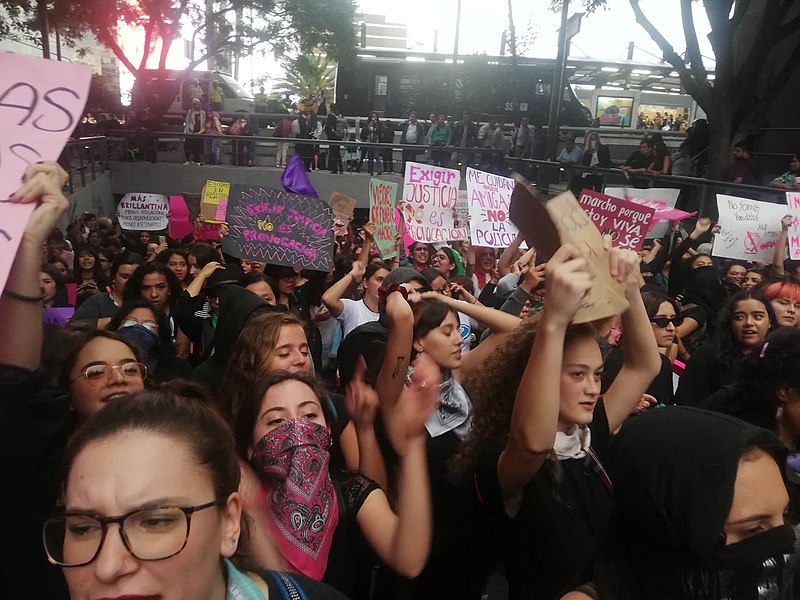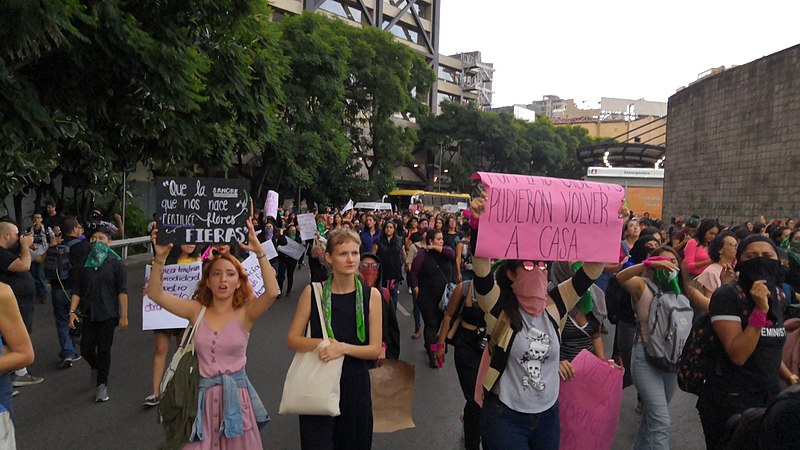Minds of the Movement
An ICNC blog on the people and power of civil resistance
by Poncho HernándezJuly 22, 2020
Last August, during a press conference with Mexico City’s police chief, a group of young women were seen breaking windows and throwing pink glitter in the police chief’s face. This was to demand justice for a teenager allegedly raped by four police officers. The episode sparked what became known as the glitter revolution, a new wave of feminist activism in Mexico with connections to other feminist collectives worldwide.
Gender violence in Mexico was at historical levels in 2019, with more than nine femicides a day and about 60 percent of the female population reporting having suffered some kind of violence, according to Mexico’s Executive Secretariat of the National Public Security System (SESNSP).
Feminism in Mexico has many internal strands ranging from what some may consider “radical” tactics (such as vandalism) to peaceful demonstrations. Because of episodes like the one last August, it has gained a reputation as being destructive and intolerant. This blog post challenges that misrepresentation and explains how the Mexican feminist movement’s use of art and symbols as nonviolent weapons has been effective and can serve as an example for other movements around the world.

Pink glitter protest in Mexico, August 16, 2019. Source: Una isla/Wikipedia (CC BY-SA 4.0, unedited).
The arts and the use of symbols
The movement began with feminist artists in Mexico engaging in street performances, wearing green scarfs and pink glitter, applying graffiti to buildings, performing rap songs, and other creative nonviolent tactics. The message behind each of their creative actions has been to challenge patriarchy and denounce gender violence in Mexico.
In my interactions with these women as a male participant of this movement, I have observed that their use of symbols aims to:
- DENOUNCE: Communicate a public message and call for justice.
- REMEMBER: Urge the public not to forget the victims; make visible something hidden; and remember those who are responsible.
- HEAL: Provide emotional closure and catharsis for the victims of violence; and to address mental health issues (art therapy).
Graffiti on monuments
Vandalizing national symbols is a common tactic, since the so-called “destruction” of those monuments makes a statement about what they represent: male-dominated history, colonization, patriarchy, and racism. In a way, by defacing these monuments, a new page of history is written. Many other movements around the world, including the ongoing anti-racism movement in the United States, have adopted this symbolic tactic as well, vandalizing statues of old white men who represent colonization and white supremacy in U.S. history.
Disruption of male-dominated spaces
The Clothesline (1978) is a work of art conceived by Mexican feminist artist Monica Mayer to capture the female experience of Mexico City. Mayer distributed pieces of paper to a diverse group of women in the city with the prompt, “As a woman, what I most hate about this city is _____.” Most of the responses collected were about sexual harassment.
Feminist activists in the country today have emulated Mayer’s work as a way to denounce sexual harassment in places traditionally dominated by men, mainly colleges, universities, and workplaces. As a visual chorus of victims’ voices, these clotheslines explicitly and publicly denounce sexual violence, harassment, and male domination.
Street performance
Mexico’s feminists use street performance to show the effects of patriarchy over women’s bodies and to denounce sexual violence and femicide. One example is “Un Violador en Tu Camino” (“A rapist in your path” or the English adaptation, “The rapist is you”), a choreographed song and dance about violence against women and machismo that has been performed by groups of women worldwide over the past several years. (See one such performance here.)
Originally from Chile, a group of feminist artists called Las Tesis created the number to unite women behind the struggle against sexual violence. “A rapist in your path” has been sung everywhere from Paris to Mumbai, and last November more than 15,000 women performed the song on the Zocalo (Mexico City’s main square). Because it’s about bringing women together in chorus and coordinated movement, the song does what other types of nonviolent actions cannot: unify, communicate, heal, and empower.
This year, a march of unprecedented scale took place on International Women’s Day, March 8th, followed by a general women’s strike the next day. These two noncooperation strategies, which took place just before the COVID-19 pandemic, were the capstone of mobilization in Mexico so far this year.

Feminists protest on August 16, 2019. Wotancito/Wikipedia (CC BY-SA 4.0, unedited).
This is just a glance of a very complex, innovative, and dynamic movement. The use of art and symbols has become not only a tool, but a way to fight. Civil resistance movements around the world can emulate creative tactics such as those discussed in this post—customizing the tactics to their cultural or geographic context while preserving their uniqueness and impact. By doing so, they contribute to growing unity among women everywhere that has emerged in the past few years.
Women are becoming empowered and we, men, are rethinking our masculinity. This is already a major achievement of the feminist movement: setting the stage for a new generation of gender relationships, where intersectionality and freedom are slowly becoming a reality.

Poncho Hernández
Alfonso Poncho Hernández is a Mexico’s City based activist, community organizer, philosopher, and anthropologist with more than 10 years of work in nonviolence and peacebuilding. His academic work is focused on the use of arts in social responses to violence, including in civil resistance and creative social movements in Latin America. He is specifically interested in peacebuilding through cultural practices in communities with high levels of violence in Mexico.
Read More